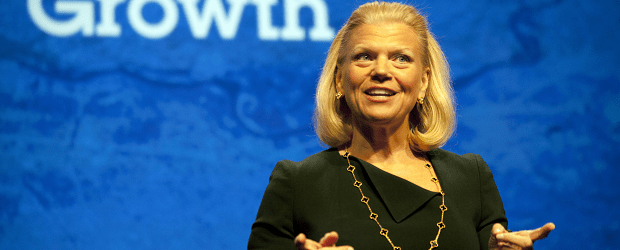LAS VEGAS – In recent years IBM Corp. has been encouraging its partners look beyond the IT department and develop relationships with line of business leaders such as the chief marketing officer (CMO) that have budgets of their own to spend on technology. Now, it’s adding another executive to the target list: the chief financial officer (CFO).
Speaking at IBM’s annual PartnerWorld Leadership Conference this week, Martin Schroeter, IBM’s senior vice-president and CFO, said the vendor’s research shows technology is seen as a key external pressure by business leaders over the next three years, both in terms of how technology could help them and what it could do for their competition.
“Technology is paying a really important part in how your customers see their future,” Schroeter told partners. “Technology had made it way to the top in the CEO’s mind.”
Speaking specifically to the role of the CFO, Schroeter said CFOs are being asked to play a broader role, by bringing in data from across the organization to help drive business performance and new opportunities.

“What this spells is new opportunities for all of us,” said Schroeter.
IBM sees three key technology-related imperatives driving CFOs. The first is the pressure to drive enterprise agility through enterprise integration. CFOs need integrated operating models and processes that can proactively adapt to changing business conditions.
The second is helping the business to make better decisions by anticipating the future. New analytics and data sources can help CFOs offer predictive and prescriptive insights and drive a forward-looking culture within the organization.
And third is to lead business model innovation through a new discipline of performance. CFOs are being tasked with guiding their company’s value creation engine with new profit opportunities.
“There is a huge opportunity here. CFOs are being asked to do more and they don’t have the tools they need,” said Schroeter. “They need to be more efficient, and deliver that platform for their business anywhere in the world the company sees opportunity. There’s a huge opportunity for our businesses to help them do that.”
Of course, the CMO remains a key focus for IBM, and one the vendor identifies as a $40 billion market opportunity. John Iwata, senior vice-president of marketing and communications with IBM, told partners IBM’s c-suite surveys indicate the top challenge CMOs are looking to technology to solve is how to see customers not as segments or a demographic slice, but as individuals.
“They want to see you not as a subscriber, but as a unique individual,” said Iwata. “What they need to do, but aren’t familiar with, is data interaction.”
Data can drive a lot of powerful new marketing tools for CMOs, said Iwata. One initiative they’re trying to drive is next best offer. In marketing terms, it’s about getting to know the individual and understand their buying patterns, so you can predict what they’ll want next and be ready to offer it to them. In technology terms, it’s better known as predictive analytics.
Another is next best action. How can an organization not just make you an offer, but recommend an action around what you should do. It may not be in service of commerce, but of enhanced customer service, such as an airline recognizing your flight is likely to be delayed and recommending a new itinerary before the delay even occurs. In technology terms, it’s perceptive analytics.
“All the data is there. We just have to put it together,” said Iwata.
Getting a single view of the customer across channels and giving them a single view of the company, pricing products to local market conditions, all are examples of CMO challenges that can be addressed through data and technology. Key to making it a success though, said Iwata, is the CMO/CIO partnership.
“The CMO and CIO need to be a team to be successful, and make their skills in data, cloud, social and mobile relevant to the CMO,” said Iwata. “And let’s not try to talk only about technology, but focus on business outcomes.”
And with all this focus on line of business leaders, it’s important for CIOs to bring their IT expertise to the table and make their value proposition clear or risk eviction from the c-suite said James Alexander, senior vice-president with the Info-Tech Research Group.
“More than have the people hired into marketing organizations this year will have an IT background, so you have this rise of the tech savvy business leader,” said Alexander. “(CIOs) can become the facilities manager, or become the orchestrator of business value by assembling a roster of technology partners that will meet the needs of the business leaders.”
According to IBM, line of business leaders are involved in 60 per cent of IT business decisions, and that number is only likely to grow.






